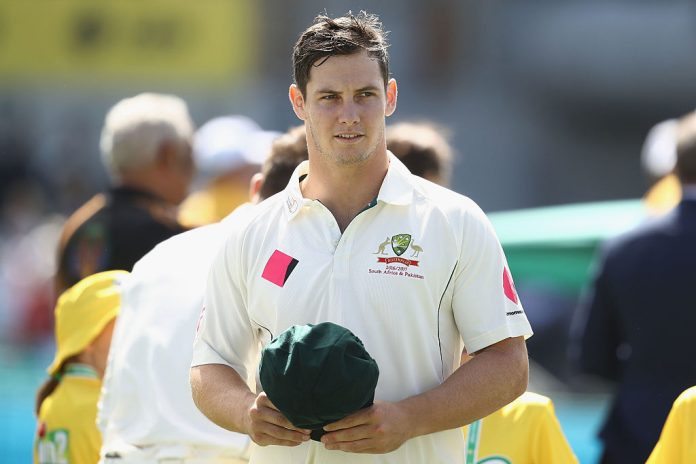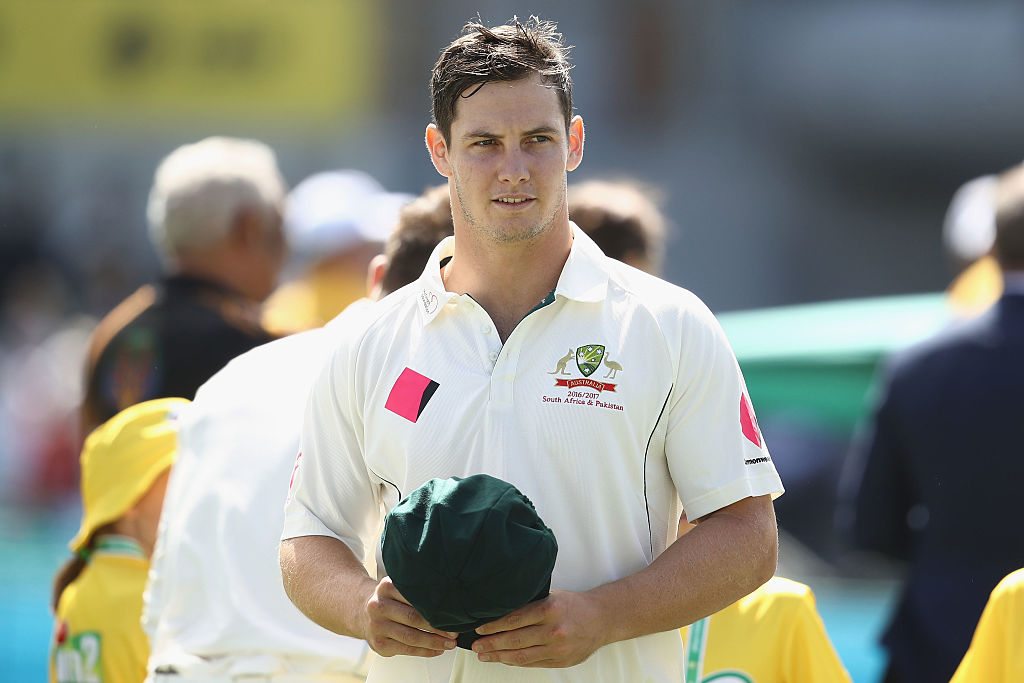

The most hotly-contested series in world cricket is now just a few weeks away, and questions remain about Australia’s batting line-up for the first Test against the old enemy.
Let’s start with what we know.
Only exceptional circumstances will see David Warner and Steve Smith not selected.
Peter Handscomb and Matthew Renshaw have not been in great touch to start the Australian season, but looked comfortable under intense pressure last season, and should be given the opportunity again.
Usman Khawaja looks to have the number three position secured after hitting a century in the first Sheffield Shield game last week, in difficult conditions at the GABBA.
It’s the last position in the order, most likely number six, that remains a mystery.
Victoria’s Glenn Maxwell is the incumbent, having batted there in the most recent Test series’ against India and Bangladesh. Replacing Mitchell Marsh in the third Test in Ranchi, the much-maligned Maxwell made a brilliant 104 in his first Test match since October 2014, displaying patience and composure not usually associated with the hard-hitting all-rounder.
But since that knock he is yet to post a significant score, having not passed 50 in his last seven Test innings’. Scores of seven and 20 in Victoria’s opening game of the Sheffield Shield season did little to suggest that he is in top form. In his defence, he was batting out of his usual position (three and four, as opposed to five or six), and the conditions were not ideal for batting, with only one batsman (Khawaja) passing 50 for the match. But I would suggest that the selectors would be looking for more from the Big Show.
His spin bowling may give him an advantage, given the preference to have an all-rounder in the side, but Smith has shown in recent Tests to be reluctant to throw him the ball, even in spin-friendly sub-continental conditions.
One player who did impress in the opening shield game of the year was Hilton Cartwright.
Of all the contenders, he arguably had the best outing in the first round of matches, posting 61 and 38 against Tasmania at the WACA. With just two Tests to his name, he is still finding his feet at this level, and was a surprise selection for the Sydney Test in January this year.
But it’s not as though Cartwright was plucked from obscurity; he made the second most runs in the Sheffield Shield last season behind veteran Ed Cowan. He boasts a very healthy average of 57 in first class cricket, something that his Western Australia coach Justin Langer says should not go unnoticed.
“Hilton Cartwright should be a shoo-in for that number six position. He averages 50 in first class cricket,” Langer told SEN on Tuesday.
“..he averages 50 in first class cricket, whereas I think the other ones they talk about, Patterson from New South Wales, he averages 41 and the rest of them average under 40.”
His bowling is not much more than a gap-filler at this stage but it is enough to give the frontline bowlers a rest for a handful of overs, a-la Maxwell.
Shaun Marsh's stop-start career may be given a re-birth this summer. Always there or there abouts, Marsh was dropped after his performances in India with his two half centuries scattered amongst scores of 16, 0, 9, 2, 4 and 1, despite being selected for the tour due to his impressive record on the subcontinent.
There may be no one batsman in the country as in-form as Marsh at the moment. Coming off a summer of County games in the UK for Yorkshire, he topped the runs-scorer’s table in the JLT One-Day Cup with 412, including three 50’s and a century. He then scored 63 and 11 against Tasmania.
The issue throughout Marsh’s career is that he’s always been thrown around the batting order; in the last 12 months alone, he started last summer as an opening batsman before batting at four in India and now potentially at number six this summer against England.
He has the backing of former captain Allan Border, and a Test match average of 36 is more than handy but at 34 it might be time to look past Marsh and blood some younger talent.
Younger talent such as New South Wales’ Kurtis Patterson.
The 24-year-old could consider himself unlucky to miss out on the opportunity that presented itself following the carnage of last year’s Hobart Test, when Renshaw, Handscomb and Nic Maddinson were all granted Test births.
Averaging 41 in first-class cricket largely batting in the middle order, the gritty left-hander could provide some stability to what has been an often-unsteady line-up.
He was dismissed twice by South Australian metronome Chadd Sayers in Adelaide last week, who bowls similarly to English strike-bowler James Anderson; not express pace, but an excellent swing and seam bowler. This may have the selectors concerned about his ability to face the swinging ball, something the English bowlers are renowned for executing.
Scores of just 14 and a duck last week are hardly going to thrust his name into contention, but he has long been viewed as an international prospect, having represented Australia at junior levels.
After impressing in the recent limited overs series in India, Marcus Stoinis was considered a potential bolter for the side, with his hard-hitting and steady bowling making him an all-round prospect. Unfortunately for the West Australian, he is missing the second round of Sheffield Shield matches due to personal reasons, effectively ruling him out of contention.
Finally, South Australian captain Travis Head may be considered, as another player who can offer some part-time bowling. Taking over the Redbacks’ captaincy at just 21, Head has been dealing with intense pressure that not many 23-year-old's would face in domestic cricket, which may have him more prepared than other for the Test arena.
The left-hander averages 33 in first class cricket with five hundreds from 55 matches.
He is not new to representing his country, having established himself as a mainstay in the ODI side since his debut last year.
Dismissed for just eight and a golden duck against NSW, he did not cover himself in glory, but gets another chance to impress against Victoria this weekend.
Having considered all this, I expect Cartwright to get the nod for the opening Test. He has the runs on the board and despite his coach describing his bowling as a “work in progress” on Melbourne radio, he can give the bowlers some relief during the day.
Marcus Uhe is a sports journalism student at La Trobe university. You can follow him on Twitter at @_marcusuhe_





